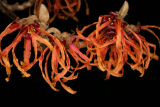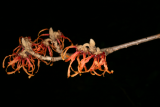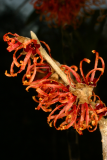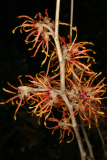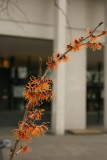Additional notes (click to expand)
Horticulture
Bears large, coppery, orange flowers in early and midwinter, and has orange and red autumn foliage.
Brickell, C. (2003). A-Z Encyclopedia of Garden Plants. Dorling Kindersley. p.502
Medicinal
The following notes refer to the related species H. virginiana.
Native American tribes used decoctions of the bark of Hamamelis virginiana to reduce swellings and bruises. Colonists took notice and it was listed in the United States Pharmacopoeia from 1860 onwards. It was also thought to have supernatural properties and the forked branches were used as divining rods in the search for water and gold.
Distilled witch hazel is available for external use on bruises and sprains. The tincture is much stronger and should be used only under the guidance of a qualified practitioner. Witch hazel extract is a constituent of proprietary haemorrhoid ointments and other pharmaceutical preparations.
Bird, R, Houdret, J. (2000). Kitchen and Herb Gardener. Lorenz.
Nomenclature
Syn. = Hamamelis x intermedia 'Copper Beauty'
Other use
Garden hybrid between H. japonica and H. mollis. 'Jelena' named for the wife of Robert de Belder of Arboretum Kalmthout, Belgium, whose family raised many Hamamelis cultivars. Distribution: H. japonica comes from Japan, H. mollis from China. The bark and leaves are the source of witch hazel for bruises, haemorrhoids, varicose veins, and other skin conditions, although commercially H. virginiana is the usual source. It is produced by stem distillation of the twigs.
Oakeley, Dr. Henry F. (2013). Wellcome Library notes.
link
Podcast
Hamamelis x intermedia Rehder 'Jelena'
Family: HAMAMELIDACEAEGenus: Hamamelis
Species: intermedia Rehder
Cultivar: 'Jelena'
Common names: Witch Hazel
Habit: Shrub
Hardiness: H5 - Hardy; cold winter
Garden status: Currently grown
Garden location: Plants of the World (B)
Flowering months: January
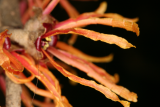
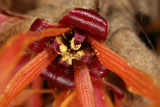
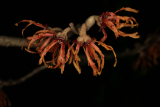
.JPG)
.JPG)
.JPG)
